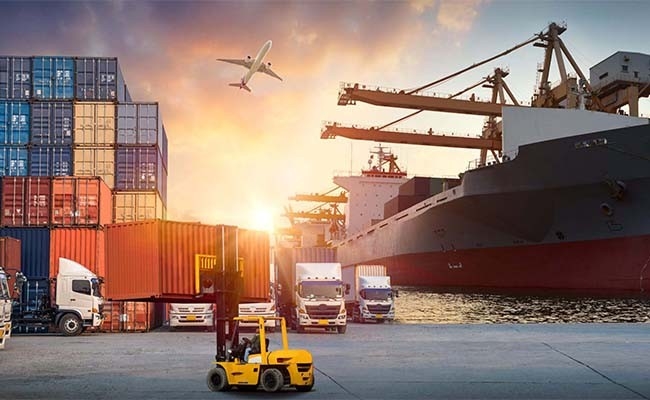Advantages of China to Europe Freight You Must Know

The movement of commodities between China and Europe has increased significantly in recent years due to a number of strategic, technological, and economic factors. Improving communication and trade across these regions has been made possible in large part by China's Belt and Road Initiative (BRI). The advantages of freight from China to Europe are growing as commodities transportation grows more sophisticated and efficient. We examine the many benefits that this logistical channel provides here.
● Economic Development and Trade Growth
The major boost to economic growth and trade expansion that goods from China to Europe offer is one of the biggest advantages. These two significant economic zones are connected by the movement of goods by train, sea, and air, which promotes the exchange of resources and goods. Thanks to this relationship, European companies can now affordably purchase a wide range of Chinese items from China, such as machinery, textiles, electronics, and more. On the other hand, it allows Chinese producers to enter the European market, promoting a trading partnership that can advance growth for both parties.
● Affordable Transportation Options
There are several affordable options for freight from China to Europe, especially when using train and maritime lines. For example, rail freight has become a viable alternative to both the faster and more expensive air freight and the slower and less expensive sea freight. Trains are faster than maritime shipping and can move large amounts of cargo at a cheaper cost than air travel. Rail freight is a desirable alternative for companies trying to maximize the effectiveness of their supply chain because of its cost-speed balance.
● Advantages for the Environment
Particularly for rail freight, there are significant environmental advantages. Trains emit less carbon dioxide per tonne of cargo moved than both air and land transportation. As a result, rail freight is now a more environmentally friendly option that supports international initiatives to cut carbon emissions and fight climate change. Businesses can satisfy sustainability goals while maintaining effective logistical operations by adopting rail freight from China to Europe, especially as environmental concerns grow increasingly prominent in corporate initiatives.
● Enhanced robustness of the supply chain
Supply chain resilience is increased by the diversification of goods routes from China to Europe. Sea routes have historically dominated the movement of goods between these areas. However, disturbances like piracy, port traffic jams, and geopolitical unrest can have a big effect on maritime transportation. Businesses can reduce the risks associated with single-mode dependency by integrating air and rail freight into their logistics plans. This diversification reduces the possibility of supply chain disruptions by ensuring a more dependale flow of commodities.
● Quickness and Dependability
The New Silk Road and other rail projects between China and Europe have slashed freight travel times dramatically. By train, one may now complete a task that took many weeks by water in little over two weeks. For sectors like electronics and fashion, where time-to-market is vital, this speed advantage is essential. Quicker delivery times help firms become more competitive because they enable them to react to market demands faster and spend less on maintaining goods.
● Technological Progress
The advantages of exporting goods from China to Europe have increased even more with the incorporation of cutting-edge technologies in commodities transit. Logistics operations are now more transparent and efficient thanks to innovations like blockchain, enabling secure transactions, automated warehousing, and real-time tracking. These technologies improve supply chain management by allowing companies to keep a careful eye on shipments, plan the best routes, and guarantee on-time delivery of goods.
● Strategic and Financial Alliances
The improved freight connection between China and Europe also fosters more robust commercial and strategic alliances. For example, the Belt and Road Initiative fosters cooperation amongst the nations along the path in addition to improving infrastructure. All parties involved may gain from this collaboration if it results in more investments, joint ventures, and the sharing of experience. These kinds of collaborations can also promote regional development, opening up fresh avenues for business and expansion outside the transportation industry.
● Diversification of the Market
Purchasing goods from China gives European companies more market diversification options. It is possible to disperse risk and lessen reliance on local markets by having access to a large variety of suppliers and products. This diversification can result in more affordable prices, higher-quality goods, and creative solutions, all of which can improve the value that is provided to clients.
There are many advantages to the goods transit link between China and Europe, including increased supply chain resilience, cost-effective solutions, and economic growth. Integration of several freight modalities will enhance the effectiveness and dependability of this vital commerce route as technology continues to change the logistics landscape. Companies that make use of these advantages can significantly increase their competitiveness in the global market, promoting wealth and growth on both continents.
Visit now:: https://mas-cn.com/
- Industry
- Art
- Causes
- Crafts
- Dance
- Drinks
- Film
- Fitness
- Food
- Jocuri
- Gardening
- Health
- Home
- Literature
- Music
- Networking
- Alte
- Party
- Religion
- Shopping
- Sports
- Theater
- Wellness
- News


